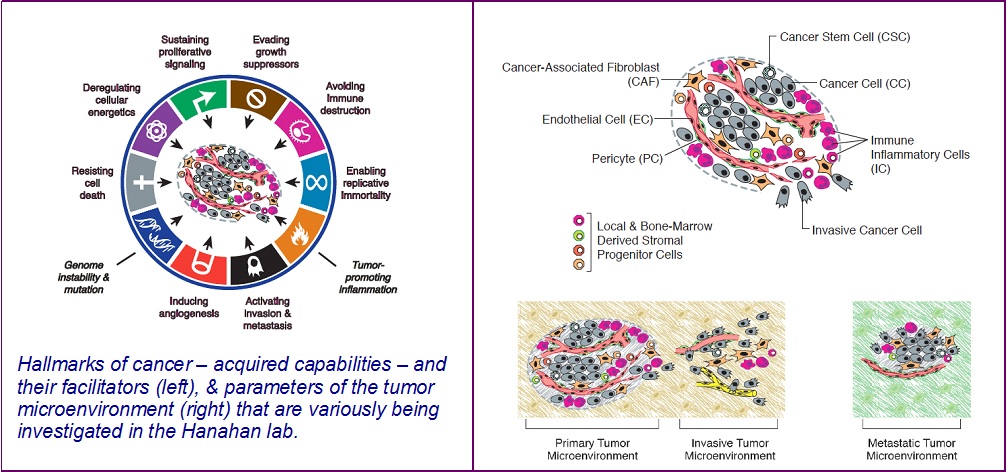Mechanisms underlying multistep tumor development and their translation toward new therapeutic strategies
The Hanahan lab’s research program is centered upon the use of genetically engineered mouse models (GEMMs) of multistep de novo tumor development, growth, and malignant progression, where we chart pathways of tumorigenesis, seeking to understand the deterministic rate-limiting steps – and their mechanistic underpinnings – that define pathways to cancer. Historically the lab’s research has touched upon most of the hallmarks of cancer, the acquired capabilities thought to be instrumental for the disease. The strategic plan is twofold: 1) to elucidate functional and phenotypic manifestations, molecular and cellular mechanisms, and regulation of acquired hallmark capabilities, and 2) to translate knowledge of mechanisms toward clinical applications, in part via preclinical therapeutic trials that have promise to guide consideration of clinical trials.

Currently the lab studies a number of organ-specific cancer models, each with distinctive attributes and potential to impact knowledge and cancer therapy. The models include both forms of pancreatic cancer (ductal and neuroendocrine), cervical cancer, melanoma, metastatic breast cancer, and glioblastoma. Topics of investigation – beyond those highlighted below – include ‘immuno-oncology’, in particular mechanisms and therapeutic abrogation of barriers erected in the tumor microenvironment that block efficacious T-cell immunotherapy of solid tumors (cervical cancer and melanoma), and manipulation of cellular recycling (autophagy) to disrupt growth and progression of glioma brain tumors.